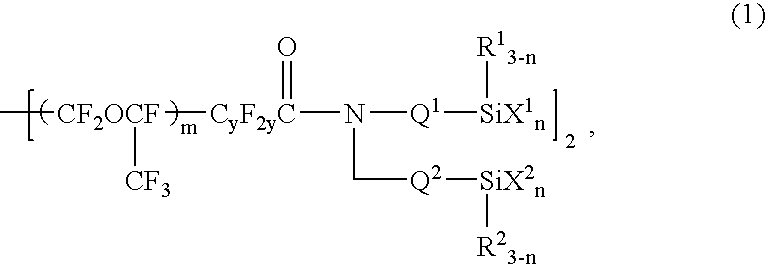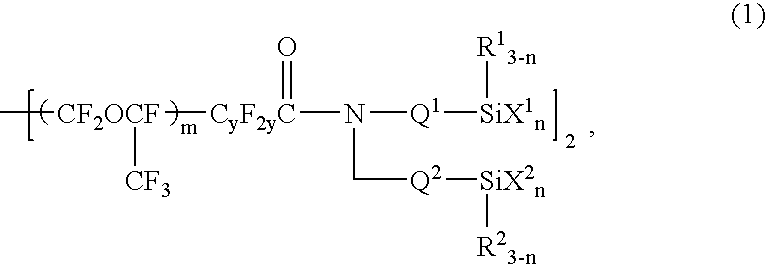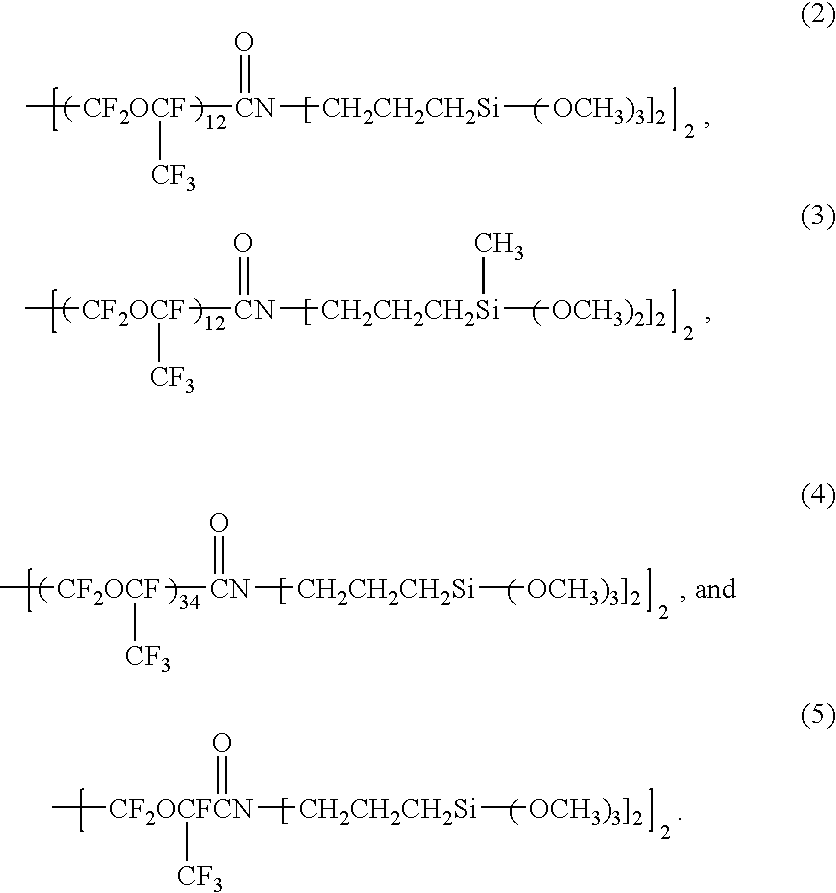Anti-reflection spectacle lens and its production method
- Summary
- Abstract
- Description
- Claims
- Application Information
AI Technical Summary
Benefits of technology
Problems solved by technology
Method used
Image
Examples
example 2
[0078] An anti-reflection spectacle lens 1 was produced in the same manner as in Example 1 except for changing the material of the water- and oil-repellent layer 8 to the compound represented by the above formula (3). The materials, optical thickness and refractive indexes of each layer of the anti-reflection film 10 and the water- and oil-repellent layer 8, and their vacuum deposition conditions are shown in Table 2, in which Layer No. represents the reference-numeral of each layer. The resultant anti-reflection spectacle lens was evaluated in the same manner as in Example 1. The results are shown in Table 4. This spectacle lens had the same anti-reflection function as that of a spectacle lens having no water- and oil-repellent layer 8.
2 TABLE 2 Composition and Properties of Layer Vacuum Deposition Conditions Optical Temperature Vacuum Layer Thickness Refractive of Substrate Degree Gas No. Material (nm) Index (.degree. C.) (Torr) Introduced 3 SiO.sub.2 193 1.462 80 1 .times. 10.sup...
example 3
[0079] An anti-reflection spectacle lens 1 was produced in the same manner as in Example 1 except for changing the material of the water- and oil-repellent layer 8 to the compound represented by the above formula (4). The materials, optical thickness and refractive indexes of each layer of the anti-reflection film 10 and the water- and oil-repellent layer 8, and their vacuum deposition conditions are shown in Table 3, in which Layer No. represents the reference numeral of each layer. The resultant anti-reflection spectacle lens was evaluated in the same manner as in Example 1. The results are shown in Table 4. This spectacle lens had the same anti-reflection function as that of a spectacle lens having no water- and oil-repellent layer 8.
3 TABLE 3 Composition and Properties of Layer Vacuum Deposition Conditions Optical Temperature Vacuum Layer Thickness Refractive of Substrate Degree Gas No. Material (nm) Index (.degree. C.) (Torr) Introduced 3 SiO.sub.2 193 1.462 80 1 .times. 10.sup...
PUM
| Property | Measurement | Unit |
|---|---|---|
| Thickness | aaaaa | aaaaa |
| Temperature | aaaaa | aaaaa |
| Angle | aaaaa | aaaaa |
Abstract
Description
Claims
Application Information
 Login to View More
Login to View More - R&D
- Intellectual Property
- Life Sciences
- Materials
- Tech Scout
- Unparalleled Data Quality
- Higher Quality Content
- 60% Fewer Hallucinations
Browse by: Latest US Patents, China's latest patents, Technical Efficacy Thesaurus, Application Domain, Technology Topic, Popular Technical Reports.
© 2025 PatSnap. All rights reserved.Legal|Privacy policy|Modern Slavery Act Transparency Statement|Sitemap|About US| Contact US: help@patsnap.com



